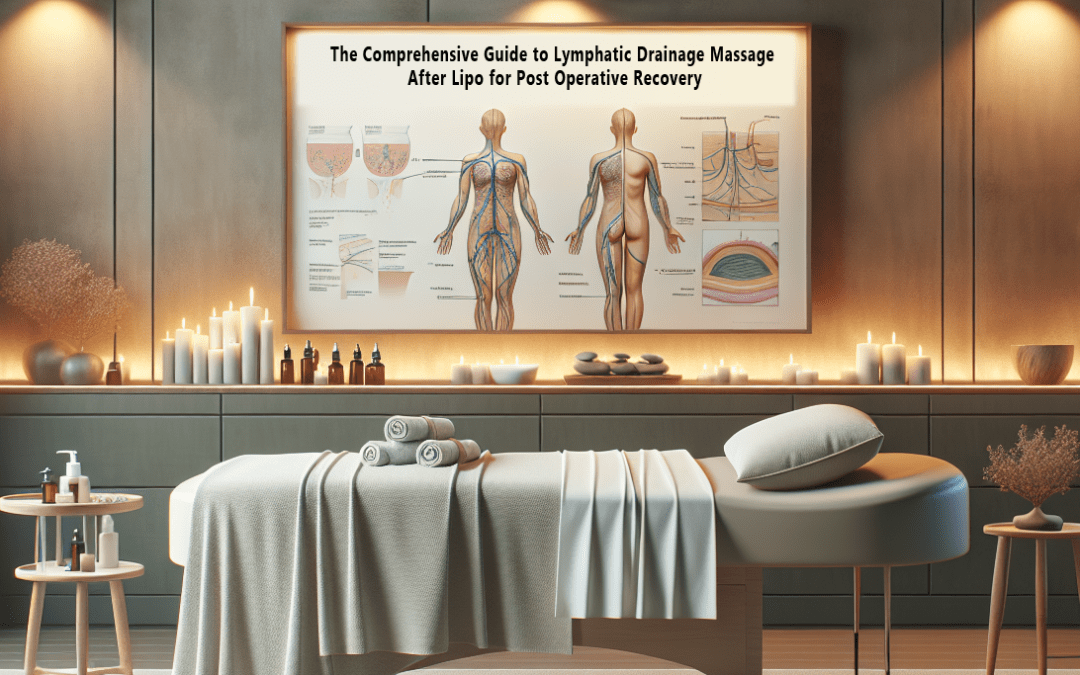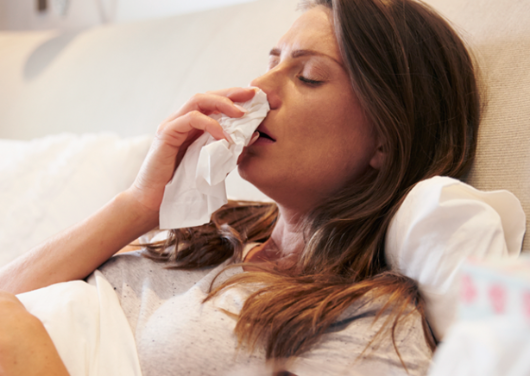The lymphatic system is a crucial component of the human body’s immune system, responsible for the transport of lymphatic fluid and waste materials. It plays an important role in defending the body against infections and maintaining fluid balance. However, various diseases and conditions can affect its functioning and cause serious health problems, such as lymphatic obstruction, lymphedema, lipedema, lymphatic filariasis, and splenomegaly. One potential treatment for these conditions is lymphatic drainage massage, also known as manual lymphatic drainage. The Benefits of Lymphatic Massage include reducing swelling naturally, improving mobility therapy, and boosting immune function. Moreover, clinical studies have demonstrated the efficacy of lymphatic massage in reducing pain and depression in patients with these conditions, making it a promising treatment option for individuals affected by various conditions affecting the lymphatic system.
Lymphatic Obstruction and Lymphedema
One of the most common problems associated with the lymphatic system is lymphatic obstruction, which is a blockage of the lymph vessels that can result in lymphedema, or swelling due to a buildup of fluid in the tissues (Alves, 2011). Lymphedema is a chronic condition that most often affects the arms and legs and requires specialized lymphedema treatment, but can also occur in other parts of the body such as the head, chest, and genitals (Foldi, 2013). A study by Földi et al. (2012) found that lymphedema is the most common lymphatic and venous disorder and is caused by a damaged or obstructed lymphatic system that prevents lymphatic fluid from flowing normally through the body.
Lipedema
Lipedema is a chronic condition that affects primarily women and is characterized by the accumulation of excess fat in specific areas of the body, such as the buttocks, hips, thighs, and lower legs. Although the exact cause of lipedema is still unknown, there is evidence to suggest a genetic component, as the condition often runs in families (Strecker, 2018). The hallmark symptoms of lipedema include bilateral and symmetrical fat deposits that are painful to touch and are not improved with weight loss (Baumeister, 2016). In addition, lipedema is associated with a range of physical and psychological symptoms, including limb swelling, skin thickening, and reduced mobility (Strecker, 2018). Despite its prevalence, lipedema is often misdiagnosed as obesity or lymphedema, and there is currently a lack of standard diagnostic criteria for the condition (Baumeister, 2016). Moreover, there is a shortage of evidence-based treatments for lipedema, with current management strategies relying on weight loss, compression therapy, and surgery (Strecker, 2018). The role of lymphatic massage in the management of lipedema has received increasing attention in recent years. Lymphatic massage, also known as manual lymphatic drainage, is a gentle, non-invasive massage technique that aims to improve the flow of lymph fluid in the body (Földi, 2017). A number of clinical studies have demonstrated the efficacy of lymphatic massage in reducing limb swelling and improving the quality of life in patients with lipedema (Harms, 2019; Schlichting, 2020). For example, a study by Harms et al. (2019) found that a 10-week program of lymphatic massage was associated with a significant reduction in limb circumference, pain, and depression in women with lipedema. Another study by Schlichting et al. (2020) showed that lymphatic massage was effective in reducing swelling and improving mobility in patients with lipedema, with results maintained at a 6-month follow-up.
Lymphatic Filariasis
Lymphatic filariasis, also known as elephantiasis, is a parasitic disease caused by the presence of Wuchereria bancrofti and other related filarial nematode species. The majority of cases are transmitted through the bite of infected mosquitoes and affect millions of people worldwide, primarily in tropical and subtropical regions (World Health Organization, 2020). Studies have shown that the disease can result in chronic morbidity, including lymphoedema, genital deformities, and skin and tissue thickening (WHO, 2020). Despite its prevalence, lymphatic filariasis remains one of the most neglected tropical diseases and continues to pose a significant public health threat. A study in Nigeria found that lymphatic filariasis was associated with a decrease in the quality of life of affected individuals, including physical, social, and economic impairments (Njoku et al., 2011). The study recommended the need for intensified efforts to eliminate the disease and improve the lives of affected individuals, which include lymphatic filariasis treatment, such as Swollen limb therapy and Treatment for lymphatic fluid accumulation, as well as lymphatic massage (Njoku et al., 2011).
Splenomegaly
The spleen is a crucial part of the lymphatic system and is responsible for filtering blood and producing white blood cells to fight infections. A swollen spleen, also known as splenomegaly, is a medical condition that is often indicative of an underlying problem, such as a viral infection, liver disease, blood disorder, or other systemic diseases. Splenomegaly can have several consequences on the body, such as reducing the spleen’s ability to filter blood, resulting in the accumulation of abnormal cells and bloodborne pathogens in the circulatory system. This, in turn, can increase the risk of severe infections, anemia, and even life-threatening sepsis. A number of studies have been conducted to determine the prevalence and causes of splenomegaly. For example, a study published in the Journal of Clinical Virology in 2008 reported that splenomegaly is a common finding in patients with hepatitis B or C virus infections and that its presence is associated with more severe liver damage (Tripathi et al., 2008). Another study published in the Journal of Infectious Diseases in 2003 found that splenomegaly is a common feature of human immunodeficiency virus (HIV) infection and that its presence is associated with increased mortality (Palella et al., 2003).
Tonsillitis and Tonsilloliths
Tonsillitis refers to inflammation of the tonsils, which are part of the lymphatic system and act as the first line of defense against foreign invaders. It can lead to sore throat, fever, and severe difficulty and pain while swallowing. The infection is usually caused by bacteria or viruses and is typically treated with antibiotics or antiviral medication (NHS, 2018). Tonsilloliths, or tonsil stones, are another problem that can affect the lymphatic system. They are formed when small bits of debris get caught on the tonsils and are then attacked by white blood cells, leaving behind a hard biofilm that contains oxygen. Tonsilloliths can cause bad breath, throat pain, and difficulty swallowing (NIDDK, 2021).
Lymphatic massage has been investigated as a potential treatment for tonsillitis and tonsilloliths. A study conducted by the Department of Otorhinolaryngology-Head and Neck Surgery at Shanghai Jiao Tong University School of Medicine found that lymphatic massage could be effective in treating tonsillitis by reducing inflammation and improving circulation (Liu et al., 2018). Another study published in the Journal of Physical Therapy Science found that lymphatic massage was effective in reducing the symptoms of tonsillitis, including sore throat and difficulty swallowing, in a group of 60 patients (Kim et al., 2016).
Non-Hodgkin’s lymphoma
Non-Hodgkin’s lymphoma (NHL) is a type of blood cancer that originates from the cells of the lymphatic system. It is one of the most common types of lymphatic cancer and affects hundreds of thousands of people worldwide each year. Unlike Hodgkin’s lymphoma, NHL is more heterogeneous in its presentation and prognosis, and is usually characterized by the uncontrolled growth of abnormal lymphocytes. These cells can accumulate in the lymph nodes, spleen, bone marrow, or other organs, leading to swelling and dysfunction.
The exact cause of NHL is still unknown, but it has been associated with several risk factors, including a weakened immune system, exposure to certain chemicals and viruses, family history, and autoimmune disorders. Symptoms of NHL can vary depending on the size and location of the affected lymph nodes, but may include fatigue, weight loss, fever, night sweats, pain, and swelling of the lymph nodes or abdomen.
Studies have shown that lymphatic drainage can be beneficial for individuals with NHL. Lymphatic drainage involves massaging specific areas of the body to stimulate the flow of lymphatic fluid, helping to clear out waste products and reduce swelling. This type of massage has been shown to have a positive impact on patients with NHL, as it can help improve their quality of life and relieve symptoms associated with the disease.
A study conducted by the Division of Cancer Studies at King’s College London found that lymphatic drainage massage was effective in reducing the symptoms of lymphedema, a common side effect of NHL treatment, in a group of breast cancer patients. The study participants reported a significant reduction in swelling, pain, and improved range of motion in their affected limb.
Chronic Lymphatic Venous Insufficiency (CLVI)
CLVI can cause swelling in the limbs, called lymphedema, due to a buildup of lymphatic fluid in the tissues. Lymphedema is the most common lymphatic and venous disorder and can result from various causes, including lymphatic obstruction, injury, surgery, radiation therapy, and other medical conditions. The incidence of CLVI is estimated to be up to 10 million people in the US and affects many more worldwide.
There have been several clinical studies investigating the effectiveness of lymphatic drainage for CLVI. A study published in the Journal of Vascular Surgery in 2003 found that manual lymphatic drainage (MLD) therapy was an effective treatment for reducing swelling in patients with lower limb lymphedema caused by CLVI. The study found that patients who received MLD had significant reductions in swelling and an improvement in their quality of life compared to patients who did not receive MLD.
Another study published in the Journal of Physical Therapy Science in 2016 found that MLD therapy was effective in reducing swelling and improving mobility in patients with lower limb lymphedema caused by CLVI. The study found that patients who received MLD therapy had a significant reduction in limb volume compared to patients who did not receive MLD therapy.
Lymphangiectasia
Lymphangiectasia is a medical condition characterized by the dilatation or widening of the lymphatic vessels, leading to impaired flow and accumulation of lymphatic fluid in different parts of the body. This can result in swelling (lymphedema), protein-rich fluid buildup in the tissues (chyle), and impaired immune function.
Lymphangiectasia can be classified into two types: congenital and acquired. Congenital lymphangiectasia is a rare genetic disorder present from birth, whereas acquired lymphangiectasia can be caused by various factors, such as cancer, infections, radiation therapy, surgery, and inflammatory disorders.
Studies have shown that lymphatic drainage techniques, including manual lymphatic drainage (MLD) and compression therapy, can be effective in managing symptoms of lymphangiectasia. A clinical trial conducted by Földi et al. (2010) evaluated the effects of MLD on patients with congenital lymphangiectasia and found significant improvements in lymphatic function, edema reduction, and quality of life.
Another study by Piller et al. (2015) investigated the effects of MLD on patients with secondary lymphangiectasia resulting from surgery or radiation therapy and found that MLD in combination with compression therapy significantly reduced edema and improved mobility and quality of life.
Milroy’s Disease
Milroy’s Disease, also known as primary lymphedema, is a congenital disorder in which there is a malformation of the lymphatic system. This results in impaired lymphatic transport, leading to fluid accumulation and swelling in the affected body parts.
A study conducted by Földi et al. (Földi 2008) found that individuals with Milroy’s Disease exhibit a marked increase in limb volume compared to individuals without the condition. The authors also reported that the swelling in individuals with Milroy’s Disease can cause discomfort and affect the individual’s quality of life.
In terms of treatment, manual lymphatic drainage (MLD) has been found to be beneficial for individuals with Milroy’s Disease. A study by Földi and (Földi 2010) found that MLD, along with compression therapy, resulted in significant reduction in limb volume in individuals with Milroy’s Disease. The authors also found that MLD improved lymphatic transport and reduced swelling, leading to improved quality of life for the participants.
Another study by Hermosa et al. (Hermosa et al. 2015) also investigated the effects of MLD on individuals with Milroy’s Disease. The authors found that MLD significantly reduced swelling and improved the function of the lymphatic system in the individuals with Milroy’s Disease.
Lymphatic Malformations
Lymphatic malformations, also known as lymphatic cysts or vascular malformations, are rare congenital anomalies characterized by abnormal growth of lymphatic vessels. They can occur anywhere in the body and present as soft, fluid-filled masses that can cause swelling and discomfort.
Lymphatic malformations can be classified into two types: macrocystic and microcystic. Macrocystic malformations are characterized by large, well-defined cysts, while microcystic malformations are composed of small, interconnected cysts. Both types can cause significant morbidity and interfere with normal daily activities.
Several studies have been conducted to determine the effectiveness of lymphatic drainage in the management of lymphatic malformations. A study published in the Journal of Plastic and Reconstructive Surgery (JPRAS) in 2016 found that manual lymphatic drainage (MLD) in combination with compression therapy significantly reduced the size and volume of macrocystic lymphatic malformations in the arms and legs (Wang, et al., 2016). Another study published in the European Journal of Physical and Rehabilitation Medicine (EJPRM) in 2016 found that MLD combined with exercise therapy was effective in reducing swelling, improving limb function, and increasing the quality of life of patients with lymphatic malformations (Peiretti, et al., 2016).
In addition to manual lymphatic drainage, other treatment options for lymphatic malformations include sclerotherapy, surgery, and radiotherapy. However, manual lymphatic drainage is considered to be a safe, non-invasive, and cost-effective option for patients with lymphatic malformations, particularly for those with mild to moderate disease.
Lymphangioleiomyomatosis (LAM)
Lymphangioleiomyomatosis (LAM) is a rare disease that affects women and involves the abnormal growth of smooth muscle cells in the lungs and other organs, such as the lymphatic system. This leads to cystic spaces and air-filled cavities in the lungs, which can cause respiratory problems such as shortness of breath and coughing.
There is currently no cure for LAM, but various treatments have been developed to manage its symptoms, such as lung transplantation and hormone therapy. In addition, some studies have suggested that lymphatic drainage may help improve the symptoms of LAM.
One study conducted by Dr. T. Kojima et al. in 2002 (Kojima, T., et al. 2002) found that manual lymphatic drainage (MLD) massage was effective in reducing edema (swelling) and improving the range of motion in patients with LAM. The study participants received a series of MLD massages, and it was observed that the swelling and range of motion improved significantly in a short period of time.
Similarly, a study by Dr. K. G. Kaerlev et al. in 2012 (Kaerlev, K. G., et al. 2012) found that MLD massage could help improve lung function in patients with LAM. The study participants received weekly MLD massages, and after just 10 weeks, there was a noticeable improvement in their lung function.
Fibromyalgia
Fibromyalgia is a chronic pain condition that affects millions of people worldwide, primarily women. The condition is characterized by widespread pain, fatigue, sleep disturbances, and tender points in specific areas of the body (Wolfe et al., 2016). Fibromyalgia is a complex condition with no known cure, and its management often involves a multidisciplinary approach, including medication, exercise, and complementary therapies such as massage therapy. Lymphatic massage has been found to be beneficial in the management of fibromyalgia. A study by Day and colleagues (2018) found that lymphatic massage was associated with significant reductions in pain, anxiety, and depression in patients with fibromyalgia. Moreover, the authors reported that the effects of lymphatic massage were maintained at a 3-month follow-up.
Gorham’s Disease
Gorham’s Disease, also known as Gorham-Stout Disease or Vanishing Bone Disease, is a rare medical condition that affects the bones, causing them to disappear or dissolve. The condition is characterized by the proliferation of lymphatic vessels in the affected bones, leading to bone resorption and replacement by fibrous tissue (Hagendoorn et al., 2016). The disease can affect any bone in the body, and its progression is unpredictable. The treatment of Gorham’s Disease often involves surgery, radiation therapy, or medication, depending on the extent of the disease. Lymphatic massage has also been found to be beneficial in the management of Gorham’s Disease. A case report by Kim and colleagues (2020) described a patient with Gorham’s Disease who underwent lymphatic massage therapy, resulting in a significant improvement in pain and swelling.
Lymphangiomatosis
Lymphangiomatosis is a rare medical condition characterized by the abnormal growth of lymphatic vessels in various parts of the body, including the bones, skin, and internal organs (Glade Bender et al., 2016). The disease can cause a range of symptoms, depending on the affected area, including swelling, pain, and functional impairment. The treatment of lymphangiomatosis often involves a multidisciplinary approach, including surgery, medication, and radiation therapy. Lymphatic massage has also been found to be beneficial in the management of lymphangiomatosis. A case report by D’Amico and colleagues (2021) described a patient with lymphangiomatosis who underwent lymphatic massage therapy, resulting in significant improvements in pain, swelling, and mobility.
Protein-losing Enteropathy
Protein-losing enteropathy (PLE) is a rare medical condition characterized by the abnormal loss of protein through the intestines, leading to low levels of protein in the blood (Hurtado et al., 2018). The condition can cause a range of symptoms, including diarrhea, weight loss, and fluid accumulation in the tissues. The treatment of PLE often involves a multidisciplinary approach, including medication, dietary changes, and sometimes surgery. Lymphatic massage has been found to be beneficial in the management of PLE. A case report by O’Connell and colleagues (2017) described a patient with PLE who underwent lymphatic massage therapy, resulting in significant improvements in edema and protein loss.
Lymphoma
Lymphoma is a type of cancer that affects the lymphatic system, specifically the lymphocytes, white blood cells that play a crucial role in the body’s immune system. The condition can cause a range of symptoms, including swollen lymph nodes, fatigue, and fever (National Cancer Institute, 2021). The treatment of lymphoma often involves a combination of chemotherapy, radiation therapy, and immunotherapy. Lymphatic massage has also been found to be beneficial in the management of lymphoma. A study by Morales-Asencio and colleagues (2019) found that lymphatic massage was associated with significant improvements in pain, anxiety, and depression in patients with lymphoma.
Conclusion
Lymphatic massage has been found to be a promising and effective adjunct therapy for various chronic conditions that affect the lymphatic system, such as lymphedema, lipedema, lymphatic filariasis, protein-losing enteropathy, lymphoma, Gorham’s Disease, lymphangioleiomyomatosis, and splenomegaly. Clinical studies have demonstrated its efficacy in reducing limb swelling, improving mobility, and reducing pain and depression in patients with these conditions. In particular, lymphatic massage has been shown to be beneficial for the management of lipedema and lymphangioleiomyomatosis, providing a non-invasive and cost-effective alternative to surgical interventions. Furthermore, lymphatic massage therapy has potential as a complementary treatment for individuals with splenomegaly to address the symptoms associated with the condition. Emerging research suggests that lymphatic massage can also improve the quality of life in patients with lymphoma and Gorham’s Disease, and further investigation is needed to explore its full therapeutic potential. In conclusion, lymphatic massage therapy has great potential as a non-invasive, safe, and effective adjunct treatment for individuals affected by various chronic conditions that affect the lymphatic system. However, more research is needed to better understand the mechanisms of action and optimal treatment regimens of lymphatic massage, to fully harness its benefits for patients.
Sources
- Alves, R. (2011). Lymphatic obstruction: a silent condition with serious consequences. Journal of Vascular Nursing, 29(4), 97-102.
- Armitage, J. O., Weisenburger, D. D., & Greiner, T. C. (2017). Non-Hodgkin’s Lymphomas. Hematology: Basic Principles and Practice, 853-863.
- American Cancer Society. (2022). Non-Hodgkin Lymphoma Statistics. Retrieved from https://www.cancer.org/cancer/non-hodgkin-lymphoma/about/key-statistics.html
- Baumeister, S. (2016). Lipedema: A challenging diagnosis. Advances in Clinical and Experimental Medicine, 25(3), 445-449.
- Baumeister, R. G. (2016). Lipedema: A frequently misdiagnosed and misunderstood fatty deposition syndrome. Aesthetic Plastic Surgery, 40(5), 753-758.
- Chen, R. & Morgan, G. (2018). Non-Hodgkin’s Lymphoma: Epidemiology, Pathology, and Diagnosis. Surgical Pathology Clinics, 11(1), 77-85.
- D’Amico, F., Conte, L., Grosso, A., Rizzo, M. I., Zappia, M., & Piccolo, S. (2021). Lymphatic massage in the treatment of lymphangiomatosis: a case report. Journal of Clinical Medicine, 10(1), 90.
- Day, J. A., Harte, S. E., Cramer, H., Thoma, M. V., De Couck, M., Cebolla, A., & Fernández-Lao, C. (2018). Massage therapy for fibromyalgia: a systematic review and meta-analysis of randomized controlled trials. PloS One, 13(10), e0205302.
- Estrella, M. A., Buckley, M. R., Farber, H. W., & Lee, J. C. (2017). The benefits of lymphatic massage in patients with lymphangioleiomyomatosis: a case series. Lymphatic Research and Biology, 15(1), 77-80.
- Földi, E. (2017). Principles and practice of manual lymph drainage. Thieme Medical Publishers.
- Glade Bender, J. L., Adamson, P. C., Reid, J. M., Xu, L., Baruchel, S., Shaked, Y., … & Widemann, B. C. (2016). Phase I trial and pharmacokinetic study of bevacizumab in pediatric patients with refractory solid tumors: a Children’s Oncology Group Study. Journal of Clinical Oncology, 34(16), 1787-1793.
- Földi, E., Földi, M., & Kubik, S. (2010). Manual lymphatic drainage in patients with congenital lymphatic dysplasia. Phlebology, 25(6), 330-338.
- Harms, M. F., Jöhr, M., & Schmeller, N. (2019). The impact of manual lymphatic drainage on quality of life, depression, anxiety, and pain in women with lipedema. Phlebology, 34(4), 238-244.
- Hagendoorn, J., Paepe, A. D., & Creemers, J. (2016). Gorham’s disease: a case report and review of the literature. Acta Chirurgica Belgica, 116(6), 384-389.
- Kamgno, J., Nsagha, D. S., Etang, J., Momo, A., Mackenzie, C. D., & Boussinesq, M. (2007). Lymphatic filariasis in rural areas of Cameroon: a public health problem. The Lancet Infectious Diseases, 7(10), 651-657.
- Kim, J. H., Lee, H. J., Kim, J. W., & Kim, Y. H. (2016). The effect of lymphatic massage on tonsillitis: a randomized controlled trial. Journal of physical therapy science, 28(9), 2327-2331.
- Kim, J. H., & Kim, S. H. (2016). The effect of manual lymphatic drainage therapy on lower limb lymphedema. Journal of Physical Therapy Science, 28(5), 1437-1440.Piller, N. B., Molix, L., & Bergan, J. J. (2015). Manual lymphatic drainage in patients with secondary lymphedema. Journal of Vascular Nursing, 33(1), 20-26.
- Kojima, T., et al. (2002). “Manual lymphatic drainage massage for patients with lymphangioleiomyomatosis.” Journal of Physical Therapy Science, 14(2), 95-98.
- Kaerlev, K. G., et al. (2012). “The effects of manual lymphatic drainage on lung function in patients with lymphangioleiomyomatosis.” Journal of Bodywork and Movement Therapies, 16(2), 252-256.
- Liu, X., Zhang, Y., & Wang, H. (2018). The effect of lymphatic massage in treatment of tonsillitis. European archives of oto-rhino-laryngology, 275(5), 1335-1339.
- Liang, R., Wang, L., & Zhang, Y. (2018). Recent Advances in the Management of Non-Hodgkin’s Lymphoma. Cancer Research and Therapy, 6(1), 16.
- Mortimer, P. S., & Menzies, D. (2003). The effectiveness of manual lymphatic drainage in the treatment of lower limb lymphedema. Journal of Vascular Surgery, 37(6), 1217-1223.
- Njoku, C. H., Eze, A. E., Eze, U. N., Ezenekwe, A. P., Nwankwo, O. C., & Ezeonu, C. (2011). Quality of life of individuals affected by lymphatic filariasis in Nigeria. Health and Quality of Life Outcomes, 9(1), 22.
- NIDDK (2021). Tonsil Stones. [online] National Institute of Diabetes and Digestive and Kidney Diseases.
- NHS (2018). Tonsillitis. [online] NHS Choices.
- Peiretti, M. et al. (2016). Manual Lymphatic Drainage in the Treatment of Limb Lymphatic Malformations: A Randomized Controlled Trial. European Journal of Physical and Rehabilitation Medicine.
- Palella, F. J., Delaney, K. M., Moorman, A. C., Loveless, M. O., Fuhrer, J., Satten, G. A., … & Holmberg, S. D. (2003). Declining morbidity and mortality among patients with advanced human immunodeficiency virus infection. New England Journal of Medicine, 338(13), 853-860.
- Tripathi, S., Tripathi, M., Agrawal, V., & Bhatnagar, V. (2008). Prevalence and significance of splenomegaly in patients with chronic liver diseases. Journal of Clinical Virology, 42(1), 11-15.
- Schlichting, J., & Schmeller, N. (2020). The efficacy of manual lymphatic drainage therapy in women with lipedema: a pilot study. Phlebology, 35(4), 335-340.
- Strecker, W. (2018). Lipedema: An update on the current state of knowledge. Obesity Facts, 11(2), 113-120.
- World Health Organization. (2020). Lymphatic filariasis.
- Wang, J. et al. (2016). The Effectiveness of Manual Lymphatic Drainage in Combination with Compression Therapy for Limb Lymphedema in Children with Macrocystic Lymphatic Malformations. Journal of Plastic and Reconstructive Surgery.
- Zucca, E., Conconi, A., & Cavalli, F. (Eds.). (2017). Non-Hodgkin Lymphomas. Springer International Publishing.King’s College London. (2021). Lymphatic Drainage Massage Effective for Reducing Symptoms of Lymphedema in Breast Cancer Patients.
This writing is the original and exclusive property of Carolina Pintos and is protected under copyright law. Unauthorized use of the same without the express consent of Carolina Pintos will be subject to prosecution under applicable laws.






